Thousands of pirates and privateers sailed the waters and walked the lands written about in the pages of “Treasure Diaries, The Secret of Sarah’s Creek.” Many of them have already been made infamous by books, television shows, and Hollywood productions. A few of those encountered by my relatives during the last 500 years are described in the writings. These sea rovers sailed the shipping lanes between the Europe, West Indies, the Caribbean, and the Chesapeake Bay all while practicing-their-wares. There are far too many to be mentioned in the story. Most of their names remain lost to history.
Thousands of pirates and privateers sailed the waters and walked the lands written about in the pages of “Treasure Diaries, The Secret of Sarah’s Creek.”
Many of them have already been made infamous by books, television shows, and Hollywood productions. A few of those encountered by my relatives during the last 500 years are described in the writings.
These sea rovers sailed the shipping lanes between the Europe, West Indies, the Caribbean, and the Chesapeake Bay all while practicing-their-wares.
There are far too many to be mentioned in the story. Most of their names remain lost to history.
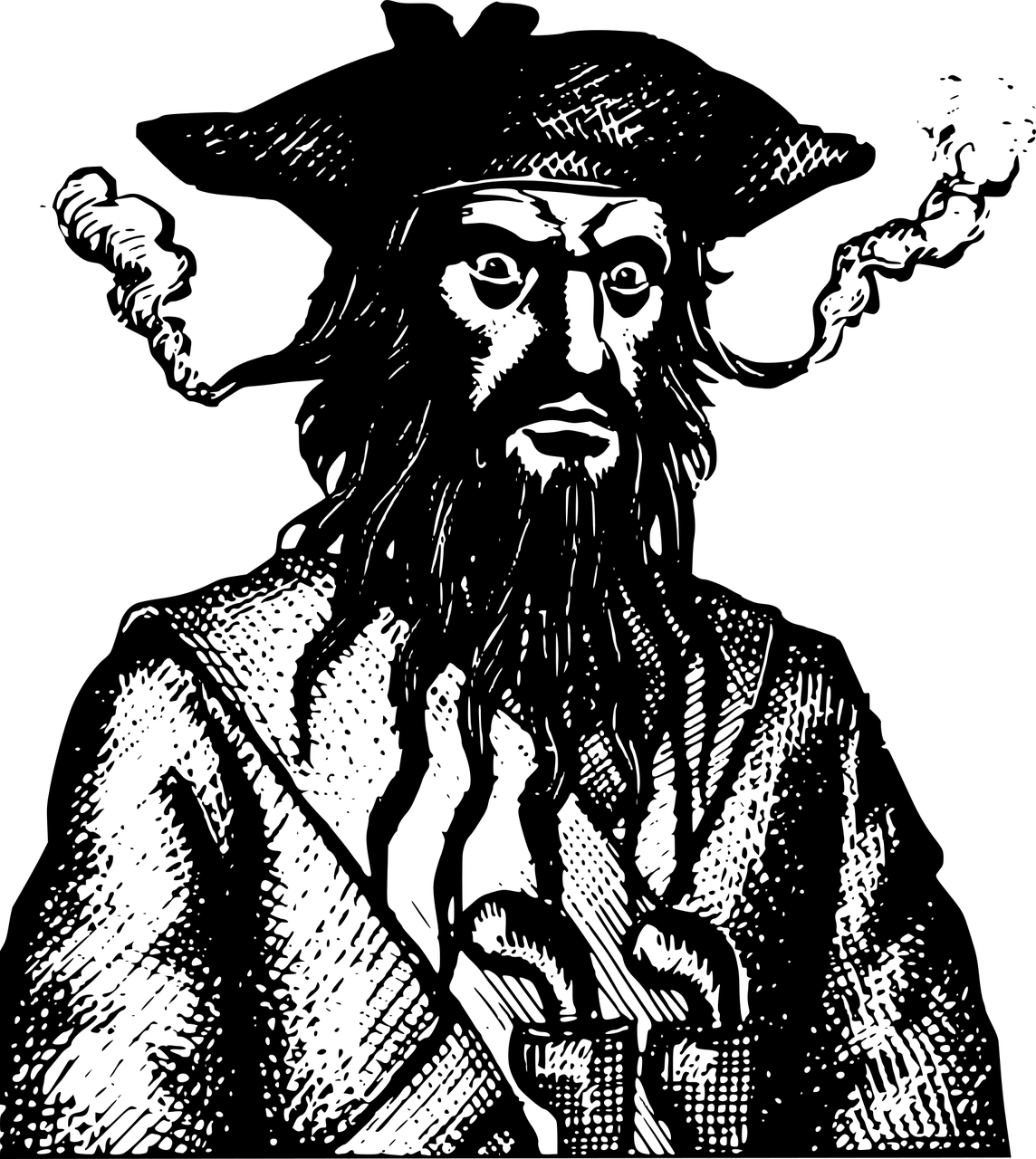
Edward Teach AKA Blackbeard
“A most scary sight with smoke, fire, and brimstone emanating from black hair and black beard and his very head. It was the devil himself.”
This was a description of the most famous pirate of all time. During his pirating time in the early 1700s he and his crew with four vessels captured thirty-five ships in the West Indies and the Americas. He had deals with the Governor of North Carolina and powerful parties in the Colonies.
However, it was not enough to stop the Lt. Governor of Virginia from sending Royal Marines and Sailors to arrest Edward Teach, otherwise known as Blackbeard, then living in the Outer Banks of North Carolina. They were not successful in arresting him but did shoot him with five musket balls and struck him twenty times with swords during a fierce and bloody sea battle in November 1718, until finally cutting his head off and placing it at the bow of one of their ships.
Blackbeard’s head eventually found a resting place on a pole at the mouth of Hampton Creek in Hampton Roads, for a while, anyway. Many of the pirate captain’s former crew were already living on the Virginia Peninsula and other localities in the Royal Colony at the time of his demise.
One of those was his retired quartermaster, William Howard, who the Governor of Virginia had arrested right before the expedition to capture Blackbeard. The pirates taken with Blackbeard were also arrested after they surrendered, and they, and former members of his crew were tried in Williamsburg and many of them hung.
The retired quartermaster was given a pardon by the King at the last minute. He paid his attorney, the mayor of Williamsburg, with a sack of gold dust. Later Howard moved to North Carolina and purchased Ocracoke Island near where Blackbeard was killed. He lived to be 108. Many of his descendants still live in Ocracoke.
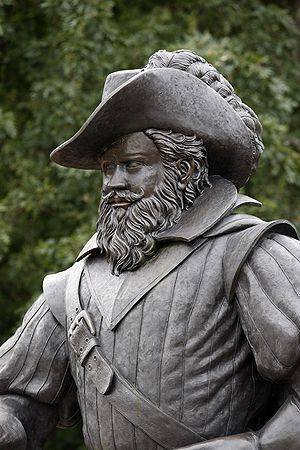
Christopher Newport
From the very beginning of Virginia, pirates and privateers were part of the scene. The captain who was in charge of the small fleet in 1607 that sailed from England and landed at Jamestown (hence, becoming the first permanent English settlement in America) was one of the most successful English privateers during the 1500s.
Captain Christopher Newport sailed with Sir Francis Drake during the latter part of the century and fought the Spanish on numerous occasions in his quest for riches, losing an arm in one of the battles. His most valuable capture was in 1592, but not against his nemesis.
Newport, together with others, took a Portuguese vessel, which had seven decks, 32 cannons, over 600 personnel, and more than 500 tons of treasure.
It was the richest prize taken by England in the 16th century and made the Captain and others very wealthy. Many of the same people in England who bankrolled English privateers, including Newport, also financially backed Jamestown and the supply ships supporting the colony.
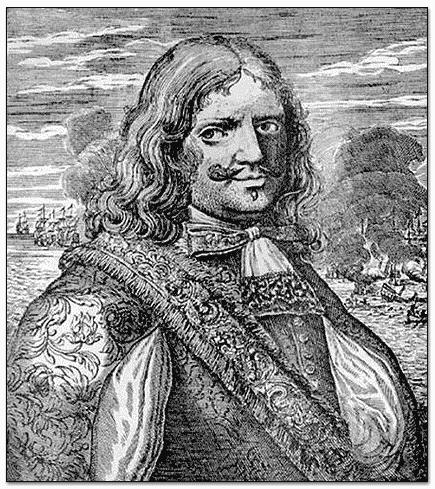
Henry Morgan
The pirates and privateers roamed all over the Atlantic Ocean and West Indies during the middle of the 1600s. One who was extraordinarily successful was English privateer Henry Morgan.
Rather than just capturing ships, he put together an army of nearly 2,000 men and a navy with as many as 36 ships at his command.
With these he attacked Spanish settlements all around the Spanish Main including Puerto Principe in Cuba, Puerto Bello in Panama, and Panama City, inflicting great pain to those in his way.
He took more than “his fair share” of loot and amassed a fortune along the way. Known for torturing his victims to obtain information about their treasures’ location, he eventually became wanted by the English Crown who had originally supported him with a letter of mark.
This turn of fortune was for attacking the Spanish after a peace treaty was signed between England and Spain, but he paid off the right people including the English Crown and was eventually knighted by King Charles II and even made the Lieutenant Governor of Jamacia, an English possession.
Forbes Magazine lists him as among the most successful pirates of all time, accumulating what would be considered in the tens of millions in today’s dollars. It is known that Morgan and King Charles II were very fond of Virginia for its loyalty and many hiding places.
Image Source: TheWayofPirates.com
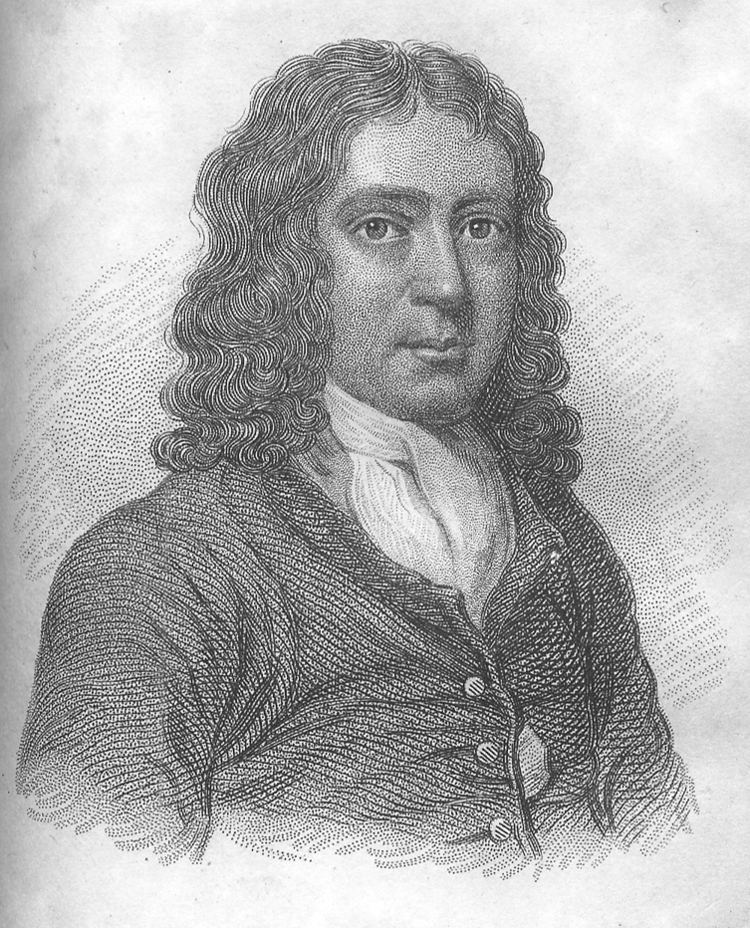
William Dampier
In the latter 1600s, a pirate and privateer found himself living within the Chesapeake Bay shores in Virginia after completing successful voyages in the West Indies. William Dampier, along with other men of his profession in the Colony, was recruited to go on another expedition of attacking the Spanish and taking their riches.
His sailings this time would leave the Atlantic Ocean and enter the Pacific. The ship he would be on would take the name Batchelor’s Delight. The crew raided Spanish settlements and took large quantities of silver, gold, and other riches during several years of activity.
Dampier would go on to become the first person to circumnavigate the globe three times. Many famous books in literature would be written about events during his life and the people he encountered.
One of them was Robinson Crusoe, another was Gulliver’s Travels. He also helped inspire a poem, “The Rime of the Ancient Mariner.” His record keeping as a naturalist helped incentivize Charles Darwin to write On The Origin Of Species a century and a half after the pirate’s death. Dampier himself wrote at least seven books including A New Voyage Around The World.
Some crew members of Batchelor’s Delight, in their attempt to retire in Hampton Roads, Virginia, ended up assisting in the founding of one of the oldest universities in America with the use of a fraction of the treasure taken by the ship’s crew while pillaging in the Pacific.
Image Source: Alchetron.com
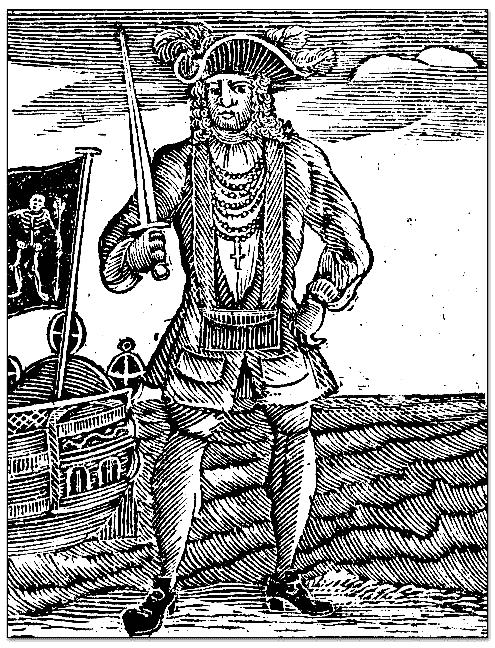
Bartholomew Roberts
During the “golden age of piracy” in the early 1700s, a teetotaling crew member of a captured slave ship was convinced to leave the “legal” merchant world and become the captain of a pirate ship.
He was considered a valuable asset since he could navigate. It is written the new pirate captain said this about his jumping ship; “In an honest service, there is thin commons, low wages, and hard labour. In this plenty of safety, pleasure and ease, liberty, and power: and who would not balance creditor on this side when all the hazard that is run for it, at worse is a sour look or two at choking? No, a merry life and a short one shall be my motto.”
Thus, Bartholomew Roberts, in his three years of commanding a pirate vessel, captured over 470 ships, more than any other pirate in history. Forbes Magazine estimated he took tens of millions of loot within that short time period. However, some of his crew stole the most valuable prize he had ever captured right from under him and eventually sailed to Hampton Roads to retire in luxury. Or so they thought. Roberts received the fate he wished for in his motto.
Image Source: TheWayOfPirates.com
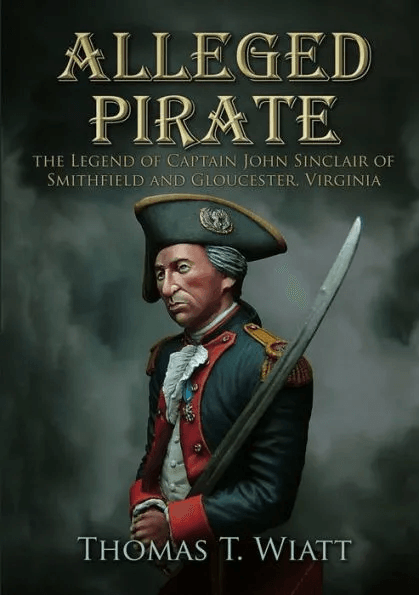
John Sinclair
Hampton Roads produced its own privateers and pirates. In the late 1700s, Captain John Sinclair was originally a merchant ship captain who supported the cause of American independence.
He got his start in the Revolution by shipping produce to the West Indies and picking up armaments on his return. Eventually, he took the fight to the British by becoming an American privateer. He was very successful in providing money to the Patriots while enriching himself and his crew in the process.
He even became a spy for Lafayette slipping his fast-sailing vessel through a British blockade of the Chesapeake Bay to personally deliver a message to the French allies based in Rhode Island during a crucial period before the battle of Yorktown.
After the revolution was over, he eventually continued his ways, against American law, becoming a privateer attacking British merchant ships in the Atlantic. He utilized multiple ports along the coast of the United States. At one point some of his ships were confiscated, and his crew arrested.
The case went before the United States Supreme Court where it was found in his favor. Sinclair built a home in Gloucester, named Lands End, where he owned miles of shoreline. Here he outfitted ships under the American flag sailing them out of the Bay to become privateers under the French flag and sometimes pirates. The entire operation was supported by the citizens of Gloucester and other nearby locations.
Image Source: Barnes and Noble
"It is all fact - proving once again that fact is more amazing than fiction."
John Hoover, PhD, MCC, MFT
New York Times, USA Today, BusinessWeek, & Wall Street Journal Best-Selling Author
If you think Treasure Diaries is a compelling title, wait until you begin reading the book. Whereas the media writes fiction and passes it off as facts, here the author has written a captivating tale of pirates, privateers, buried treasure, horses, and heroes that birthed a nation.
The author deals out a generous portion of both facts and truth in a saga that weaves its way through pre-colonized America and beyond through the lens of his family and ancestors who lived it. He didn't imagine buried treasure along the banks of Sarah's Creek, he dug it up as a child.
Never has a more gripping account of early colonization been so firmly rooted in research and corroboration by multiple accounts. If you want to learn more about how the United States came to be -- and maybe dig up a few pieces of eight in the process -- get a copy of
Treasure Diaries today and check the website daily for you will never know what might be buried there.
